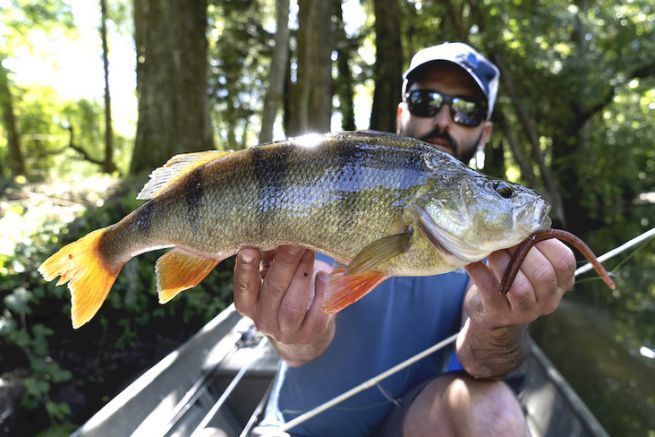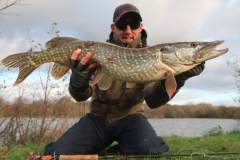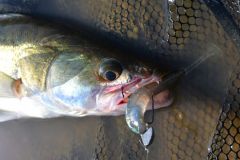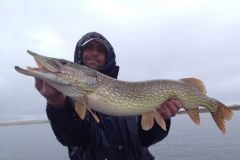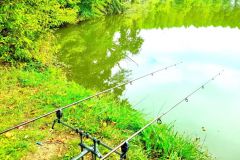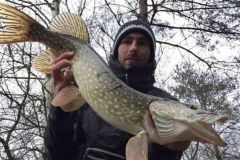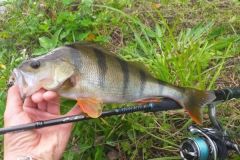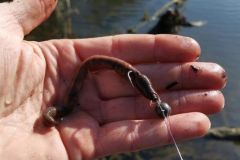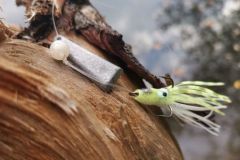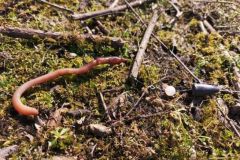The use of worms to search specifically for perch is particularly effective in general and will often make the difference when fishing conditions are difficult, for two main reasons: perch are fond of them and it plays on the novelty of an approach that is only rarely used.
Which techniques, when and with which worms?
I will use three main techniques. These are the classic Wacky mount and its variants, the Inch Wacky and the Neko Rig we have devoted a complete article to each of these techniques.
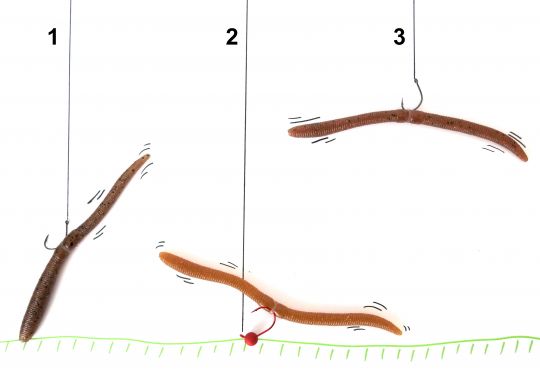
Concerning worms, I choose models that are visually realistic and whose behavior in the water is as natural as possible. As far as size is concerned, I tend not to exceed 5" (12.5 cm), the perch having a mouth much smaller than that of the black-bass. For this exercise, my two main references are the Jackall/Illex Flick Shake and Neko Flick in 4,8'' both.
Given the slow pace of these techniques, and even if the Inch Wacky allows you to fish a little faster and wider, you can't afford to apply one of these techniques by fishing at random, it would be a substantial waste of time. As for the "Finesse" approaches for black-bass, I will apply these techniques in very specific situations: 1) when I have identified fish on spots 2) when I fish marked spots where it is very likely that fish are holding.
Case Study #1: The Neko Rig
The Neko Rig is a Wacky rig with the difference that an insert (usually made of tungsten) is added in the nose of the worm to make it sink to the bottom. The animation consists in recovering the worm by making it make small successive jumps on the substrate interspersed with animation on the spot of the Shaking type.
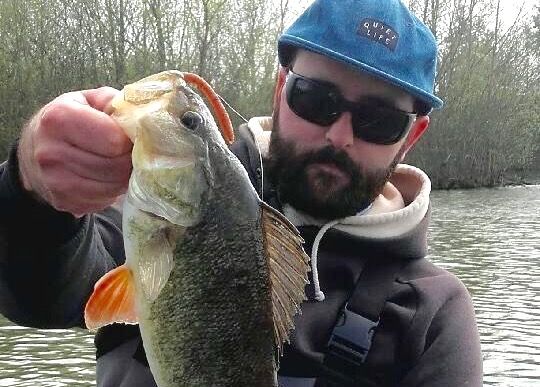
This fish was caught by chance while I was fishing with a friend in a float-tube and was looking for black-bass in Wacky on the edge. Having no result on this approach, I quickly decide to add a small tungsten insert in the nose of the worm in order to go fishing on the bottom. I then move away from the edge to prospect a promising break. The first hit was not long in coming but to my great surprise it was not a black-bass that broke the surface but a 40cm perch ! New horizons were offered to me because it is really this first fish which pushed me to dig the question of the use of worms for the specific research of the perch.
Case Study #2: The Inch Wacky
Like the Neko Rig, this is a variation of the classic Wacky rig. Here we hook a worm, not on a simple hook, but on a small Jighead classic or designed specifically for this use. In its principle, the animation consists in small tressautments of the worm on the spot on the bottom interspersed with pauses, imitating a worm which would contort itself on the substrate.
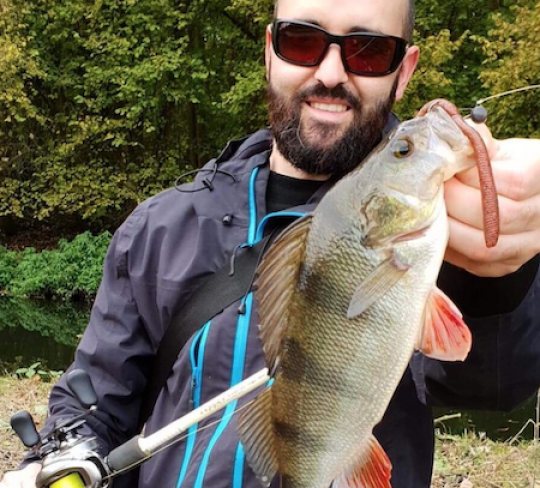
I have a memory of fishing from the shore with a friend in search of pike and perch. We had been fishing for several hours. Nothing was working. We were nearing the end of the session when, while digging through my boxes, I came across a bag of worms. I put one on a 1.8g tungsten Inch Wacky head and started fishing at my feet, vertically along the root systems of the trees. I decorate like that several marked spots while fishing in the plumb line until I succeed in making leave the roots a pretty perch that I will have had to coax during a few moments before concretizing!
Case study #3: the Wacky
The Wacky is the standard rig for worm fishing. Here, the lure will sink due to its density alone. A trick to vary the speed of descent of your worm in the water column is to move the hook to the right or left from the middle of the lure. The speed of a worm's descent will be neutral when the hook is in the middle of the lure, but faster when the hook is off center. Also, during the slow fall of the rig, twitch it as needed to give it some speed.
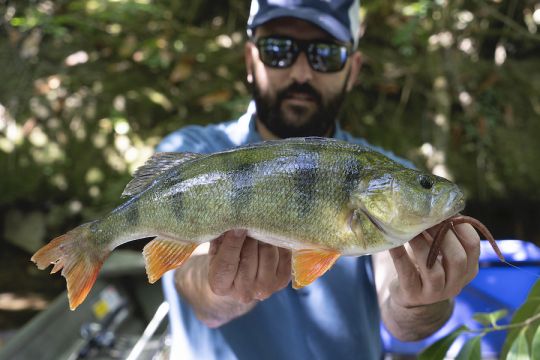
This is a fish identified while I was fishing for pike with my father. We were unrolling a boat edge and when we came to a submerged tree our lures did not bring out any pike from the branches but a gang of five large perch of over 40 cm each. Although within their reach, our lures only aroused their curiosity. We don't insist, shift the boat and let the spot rest for a while. I then grabbed an Ultra Light spinning rod armed with a Wacky rig and the first cast low in the branches was the right one. The worm is 20 cm under the surface when I see one of the fish coming up to grab it. The pole turns around and I wait to feel its weight on the line before I strike. A few moments later, a superb 43 cm fish, acting as a specimen for the sector, ends up in the net of the landing net.
As you can see, worms have changed the outcome of sessions that were slowly but surely turning into failures. A selective technique that represents a real alternative for difficult conditions. So, a piece of advice, always have a light rod mounted with a worm when you go fishing for predators!

 /
/ 